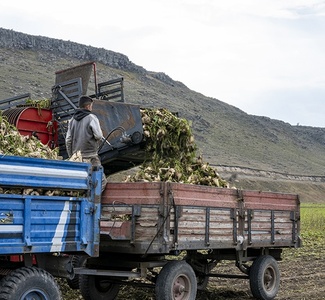WHO and ILO publish new guide for health workers
The World Health Organization (WHO) and The International Labour Organization (ILO) have published a new guide on developing and implementing stronger occupational health and safety programmes for health workers.

 Google News'te Doğruhaber'e abone olun.
Google News'te Doğruhaber'e abone olun. “Even before the COVID-19 pandemic, the health sector was among the most hazardous sectors to work in,” said Dr Maria Neira, Director, Department of Environment, Climate Change and Health, WHO. “Only a few healthcare facilities had programmes in place for managing health and safety at work. Health workers suffered from infections, musculoskeletal disorders and injuries, workplace violence and harassment, burnout, and allergies from the poor working environment.”
The COVID-19 pandemic has taken an additional heavy toll on health workers and demonstrated dangerous neglect of their health, safety and wellbeing. More than one-in-three health facilities lack hygiene stations at the point of care. Fewer than one-in-six countries had in place a national policy on a healthy and safe working environment in the health sector.
“COVID-19 has exposed the cost of this systemic lack of safeguards for the health, safety and wellbeing of health workers. In the first 18 months of the pandemic, about 115,500 health workers died from COVID-19,” said James Campbell, Director WHO Health Workforce Department.“Sickness absence and exhaustion exacerbated pre-existing shortages of health workers and undermined the capacities of health systems to respond to the increased demand for care and prevention during the crisis,” he added. “This guide provides recommendations on how to learn from this experience and better protect our health workers.”
WHO and ILO recommend developing and implementing sustainable programmes for managing occupational health and safety for health workers at national, sub-national and health facility levels. Such programmes should cover all occupational hazards – infectious, ergonomic, physical, chemical, and psycho-social.
The guide also outlines the roles that governments, employers, workers and occupational health services should play in promoting and protecting the health, safety, and wellbeing of health workers. It emphasizes that continuous investment, training, monitoring and collaboration are essential for sustaining progress in implementing the programmes.
“Effective mechanisms should be put in place to ensure continuous collaboration between employers, managers and health workers, with the aim of protecting health and safety at work” said Alette van Leur, Director, ILO Sectoral Policies Department. “Health workers, like all other workers, should enjoy their right to decent work, safe and healthy working environments and social protection for health care, sickness absence and occupational diseases and injuries.”
Countries that have developed and are actively implementing occupational health and safety programmes for health workers have experienced reductions in work-related injuries and diseases and sickness absence, as well as improvements in the work environment, work productivity and retention of health workers.
“Such programmes are a core element for the effective management of occupational safety and health, as informed by ILO Convention No. 187, and provide an opportunity for coordinated action by all stakeholders through social dialogue towards common objectives for promoting decent work in the health sector and increasing the resilience of health institutions,” said Vera Paquete-Perdigao, Director, ILO Governance and Tripartism Department. (ILKHA)



















































